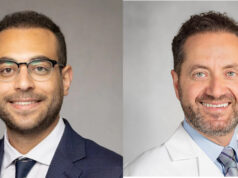A recent study evaluating the efficacy of deep brain stimulation (DBS) in patients with disorders of consciousness reported that robust but limited clinical benefits—predominantly in the visual and auditory domains—were observed. The findings, published in Annals of Clinical and Translational Neurology, led Jean-Jacques Lemaire and colleagues (Université Clermont Auvergne, Clermont-Ferrand, France) to consider the influence of societal rules governing deontology in terms of where they stand in the context of current DBS techniques and their advances in the future.
According to Lemaire, only 22% of patients with minimally conscious state and 17% with unresponsive wakefulness syndrome return to an approximation of their former levels of functioning four years following injury. Furthermore, the authors noted that the expectations of significant recovery are negated by low rates of discharge, as well as the predicament of permanent disorders of consciousness—which should be considered at six months’ post stroke, 12 months’ post trauma in unresponsive wakefulness syndrome, and between three and five years in minimally conscious state—present as the leading concerns among physicians.
However, Lemaire and colleagues acknowledged that the literature surrounding the clinical benefits of deep brain stimulation remains somewhat inconclusive, primarily due to methodological shortcomings, such as patient heterogeneity and means of assessments, as well as issues relating to time since injury, devices and contact locations.
To address the ambiguous efficacy of DBS, the authors conducted a prospective, 11-month observational pilot study that aimed to assess the relevance of DBS at the bedside. Five patients were consecutively studied between April 2012 and February 2015; each fulfilling inclusion criteria—above 18 years old, stable, with chronic disorder of consciousness status of unresponsive wakefulness syndrome or a minimally conscious state, no less than six months after cerebrovascular accident or one year follow a traumatic brain injury. Anoxic patients were excluded due to high long-term disability and low expectancy of recovery.
The study was comprised of four phases: baseline condition, lasting at least two months; DBS surgery and titration, lasting at least one month, using FDG and MRI; blind, random, crossover phase consisting of (one and a half month long) ON and OFF periods, and an unblinded, five-month stimulation phase.
The primary outcome measures focused on the Come Recovery Scale Revised (CRS-R) scores, which were used to assess conscious behaviour. Secondary outcome measures focused on baseline brain metabolism and variation in activity (stimulation ON – baseline), using normalised fluorodeoxyglucose positron emission tomography (PET) maps.
Lemaire and colleagues reported that two male patients—one minimally conscious and the other with unresponsive wakefulness syndrome, displayed improved mean CRS-R scores (shown through stimulation ON versus baseline measures), in auditory, visual and verbal subscores, and in visual subscores, respectively. Furthermore, the metabolism of the medial cortices, which was low at baseline in all five patients, increased specifically in these two responders.
In light of these findings, Lemaire and colleagues were able to observe that recovery of certain brain processes that had been dysfunctional for many years in patients with disorders of consciousness is possible using low frequency DBS. Furthermore, they were able to interpret that this recovery was linked to the modulation of the thalamo-cortico-basal and tegmental loops responsible for activating default mode network cortices. Specifically, the authors reported an increase in medial cortex activity related to internal awareness in the two responders. However, the authors maintained that these results demonstrated limited individual benefits, while quality of life remains unknown.
Therefore, the Lemaire and colleagues acknowledged that moving forward, research should decipher the complex pathophysiology involved and refine the current techniques as well as indications. Of importance, the authors wrote: “DBS techniques could be discussed in line with the rules governing deontology and ethics, on a case-by-case basis, taking into account both the burden and the vulnerability of the population of permanent disorders of consciousness patients.” Thus, they concluded that further lines of research should include this societal debate; a debate that undeniably goes hand-in-hand with the necessary therapeutic advances.










